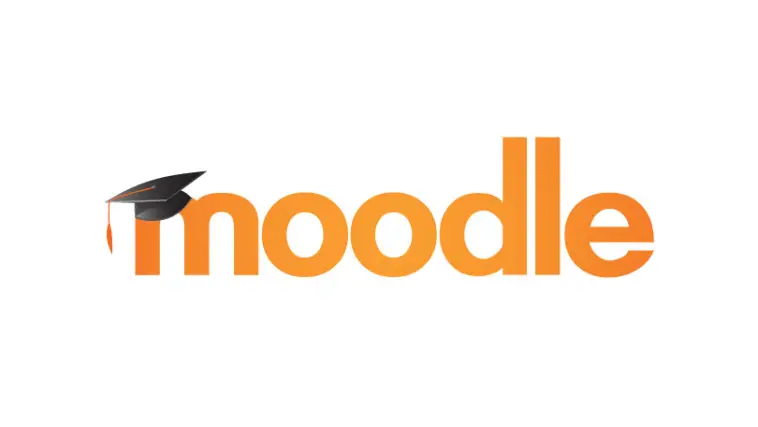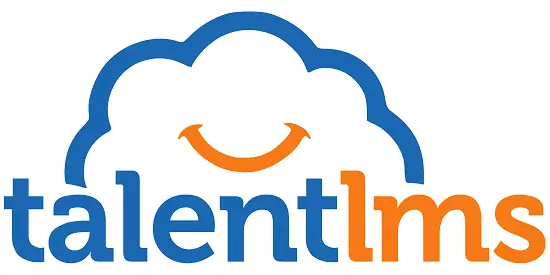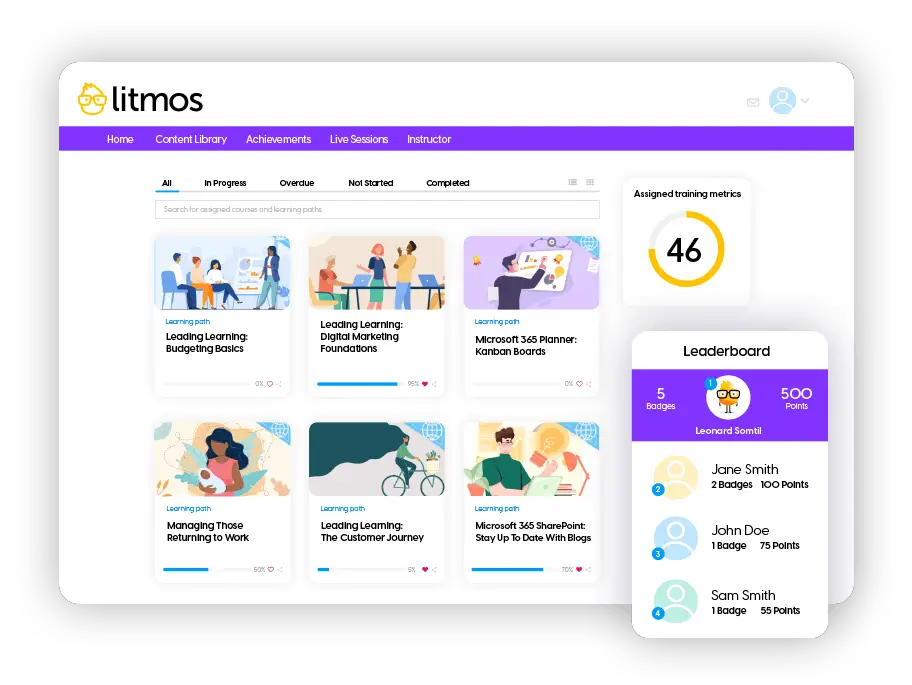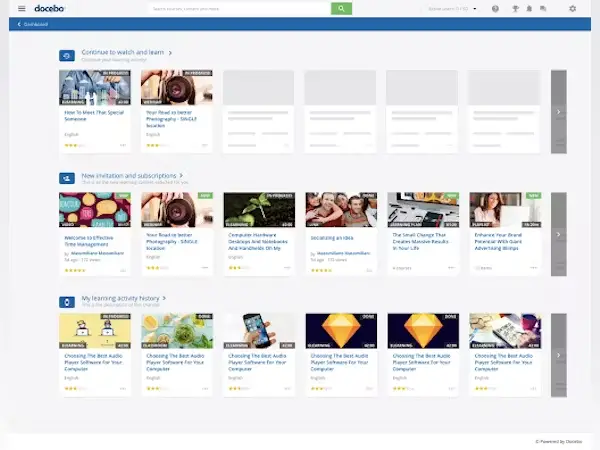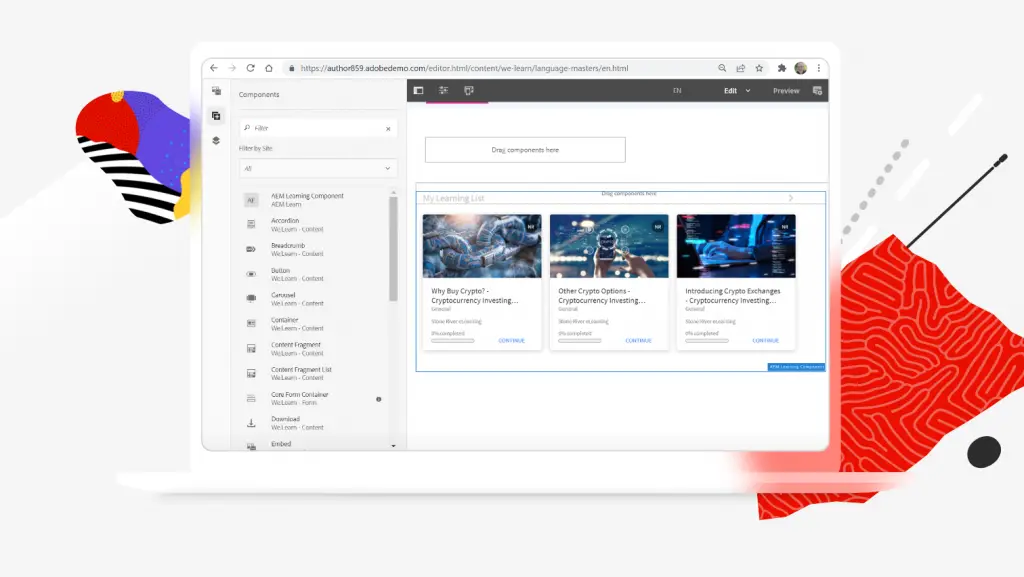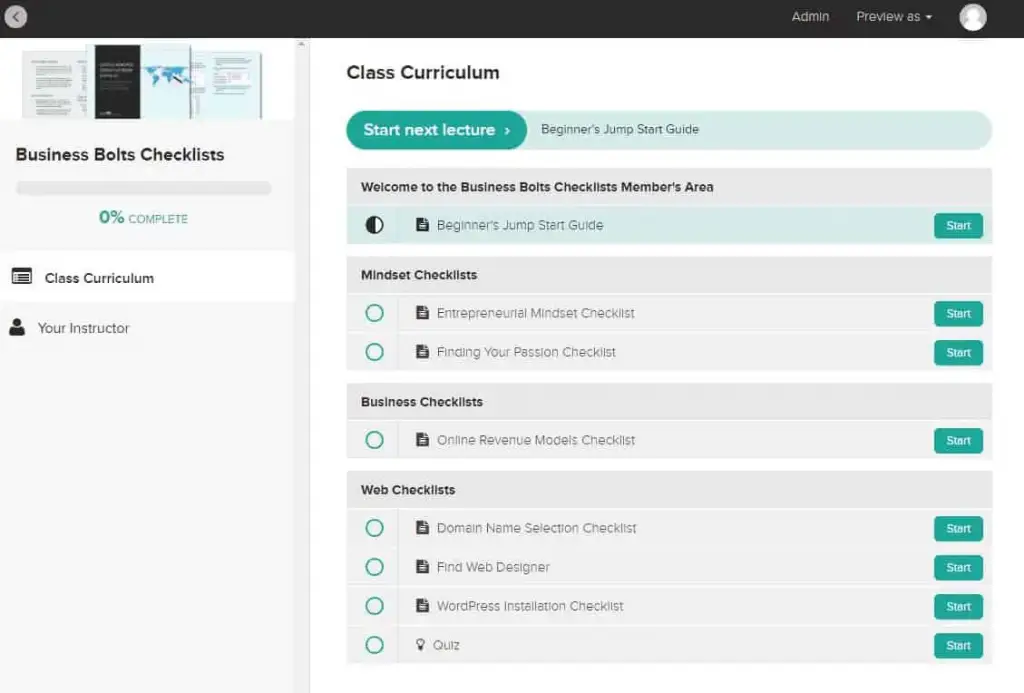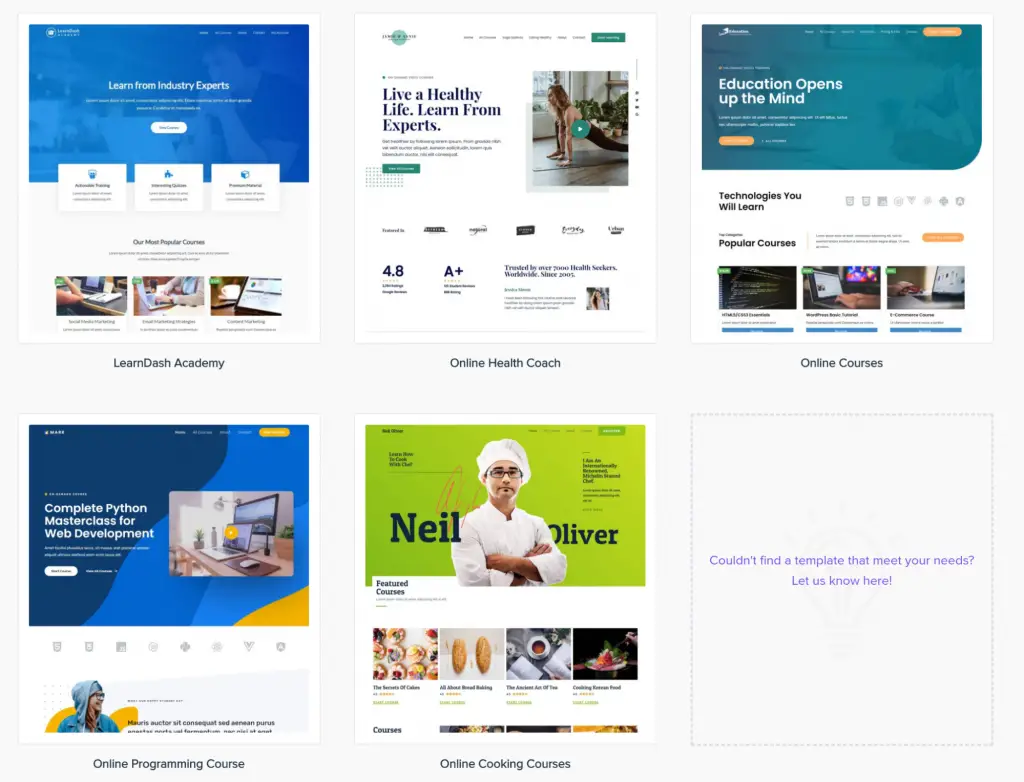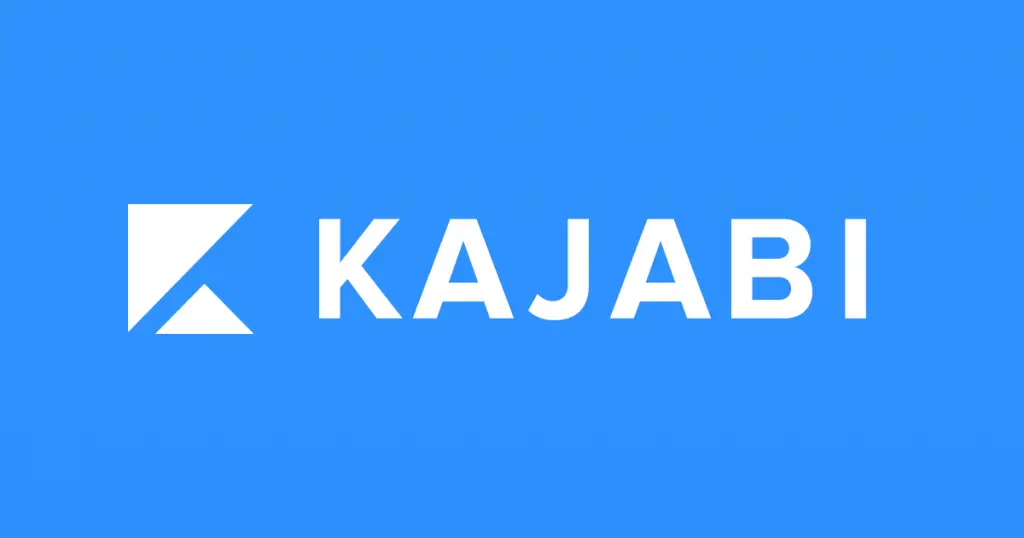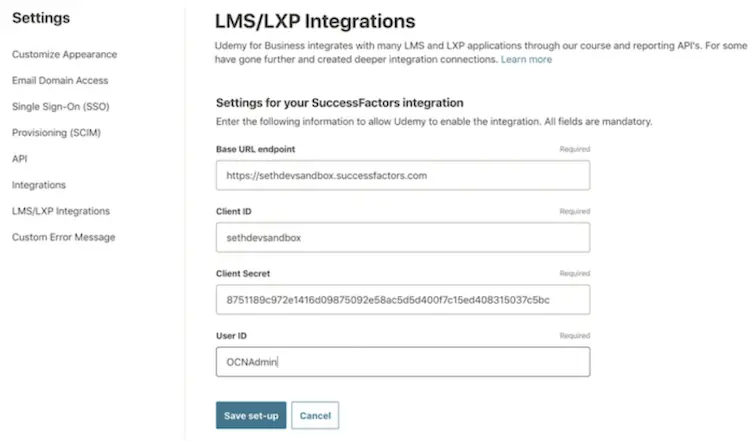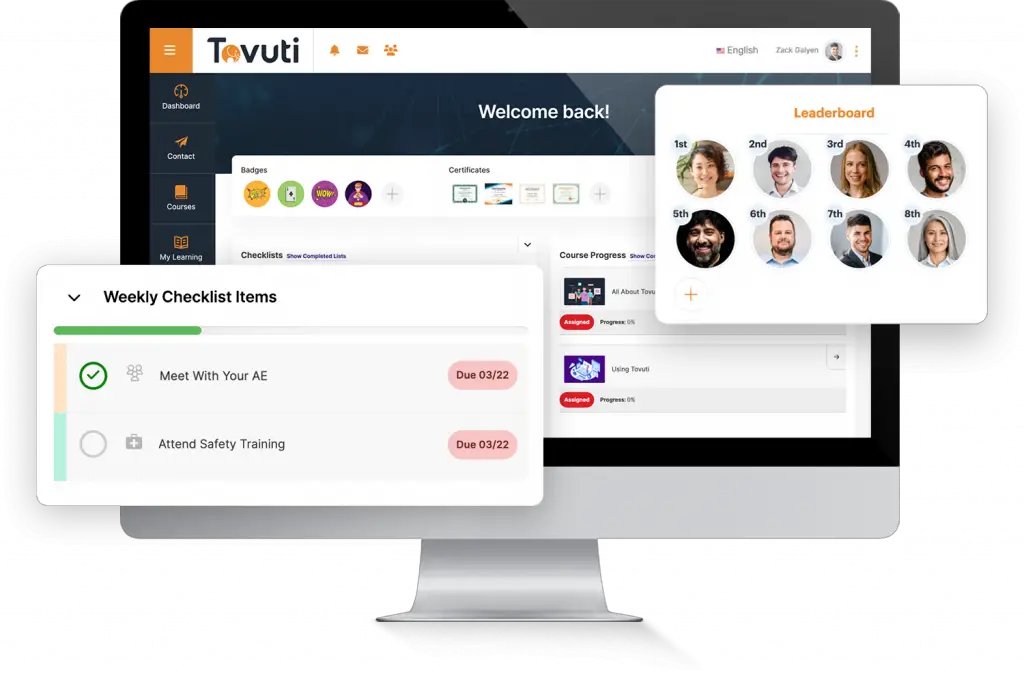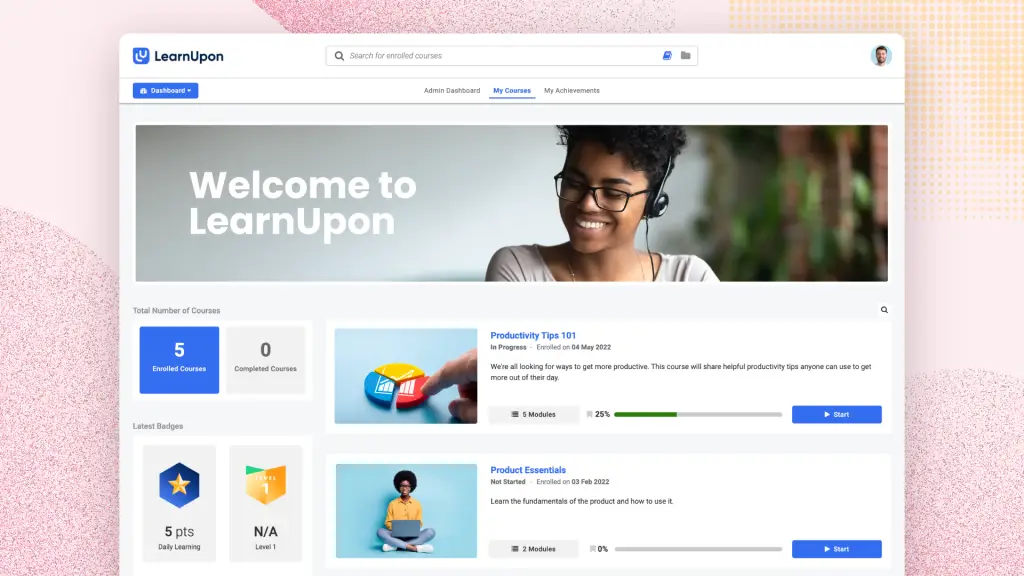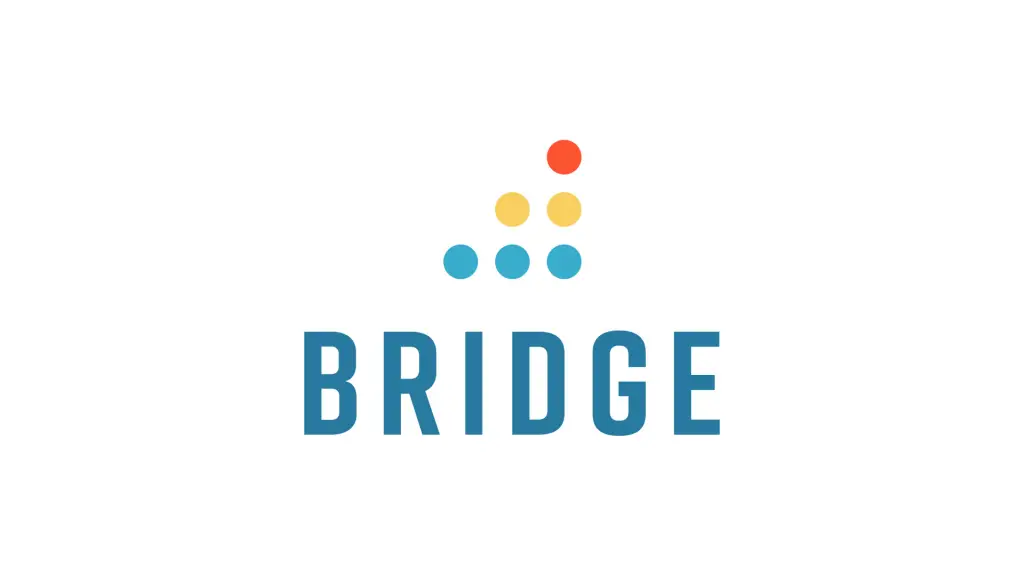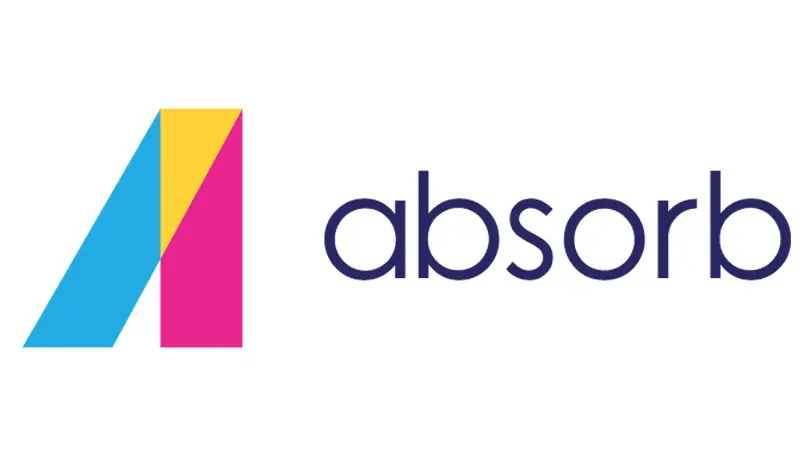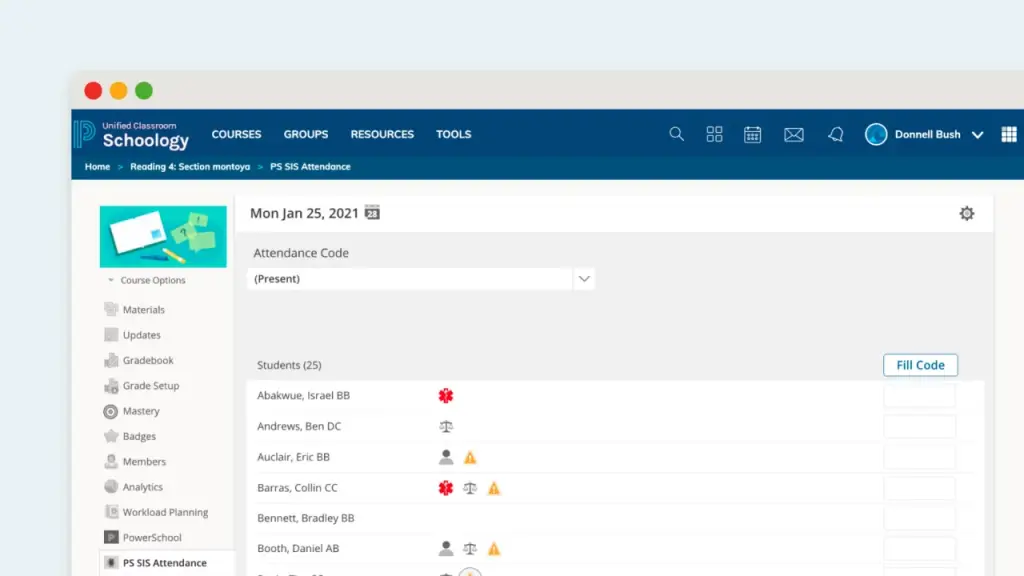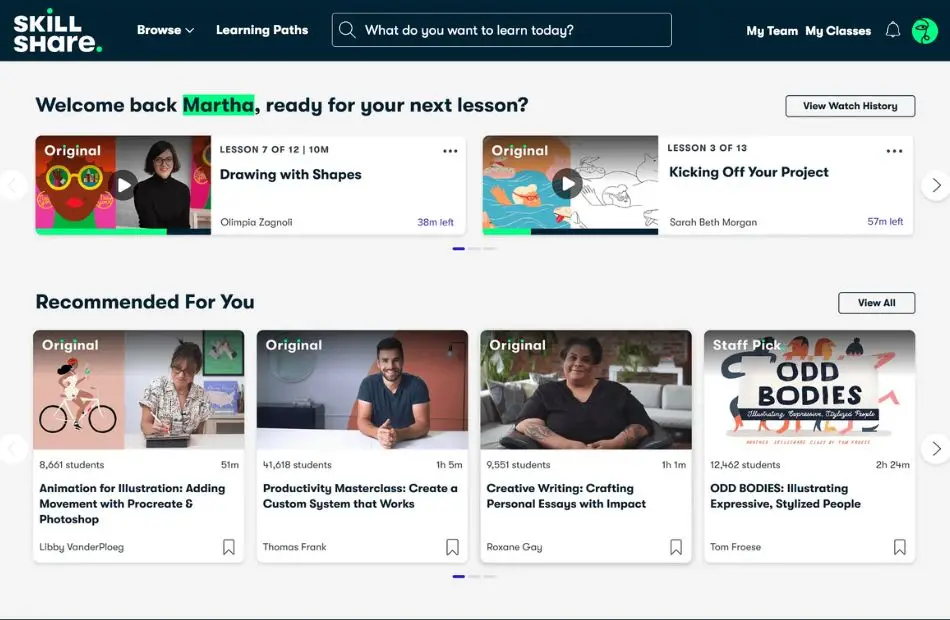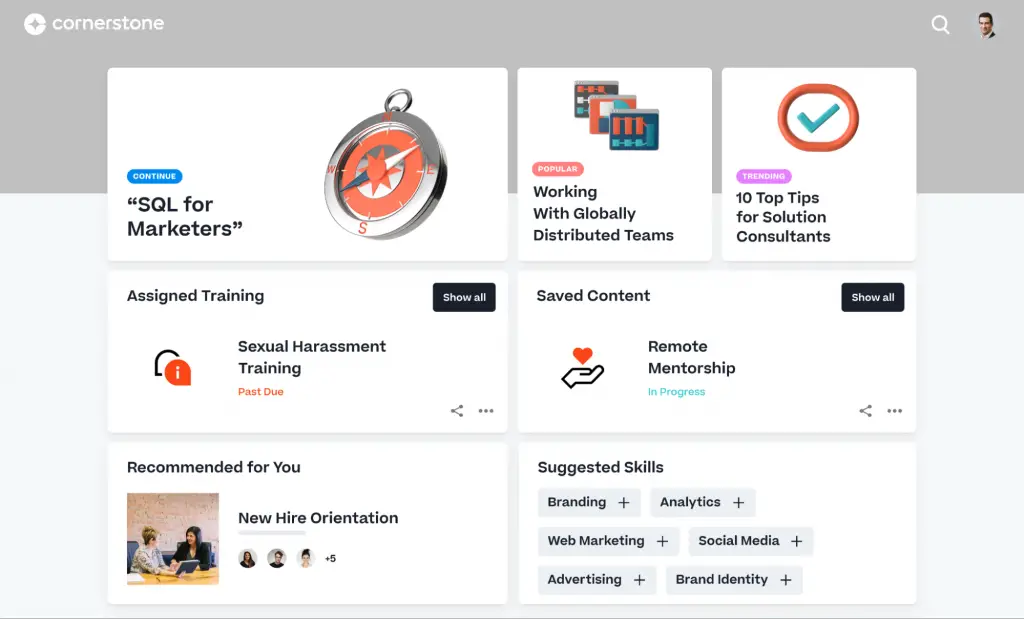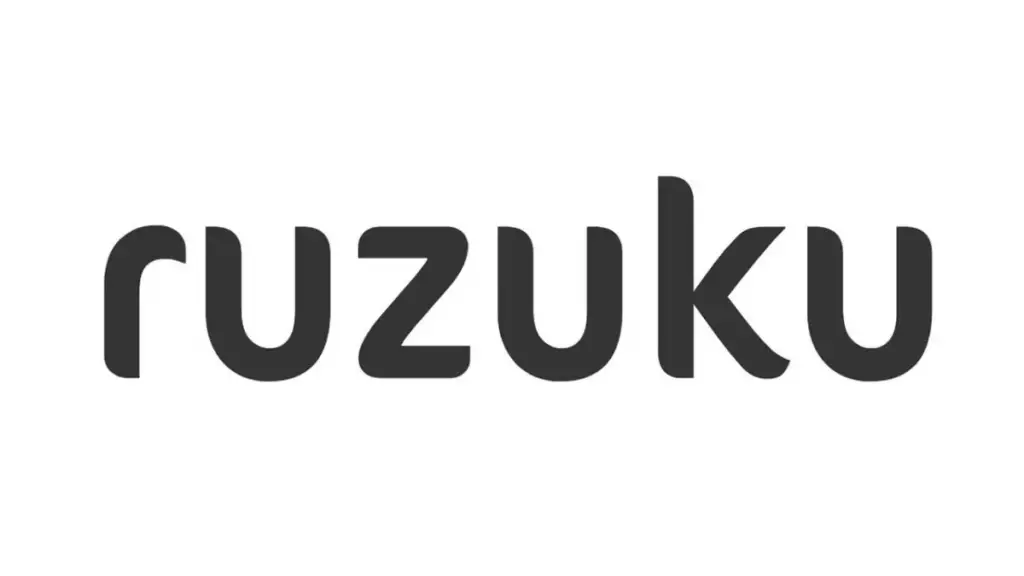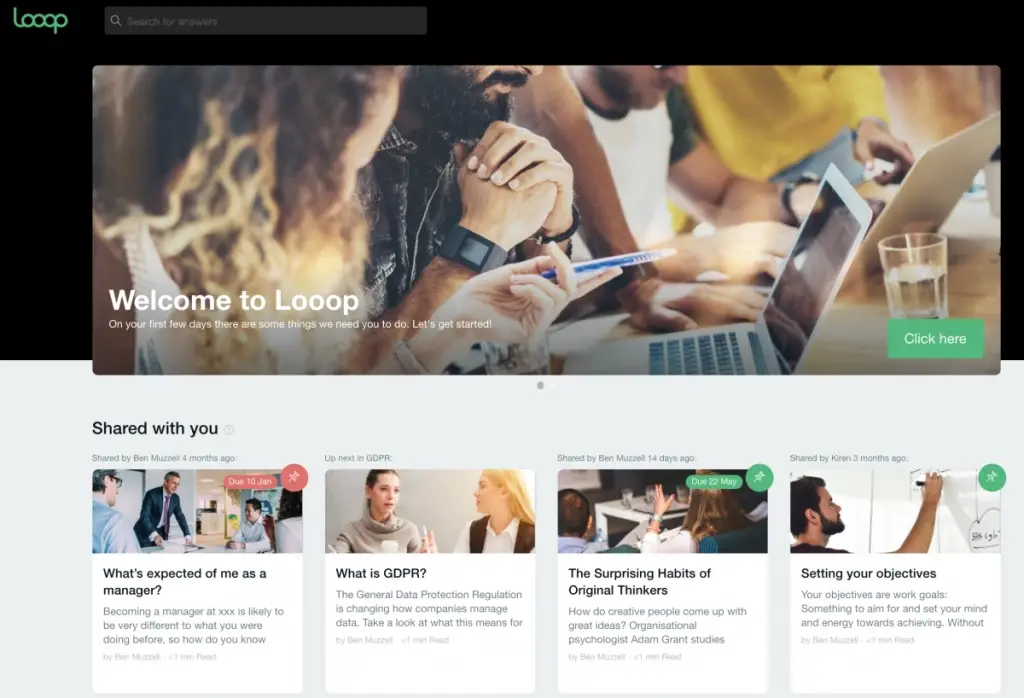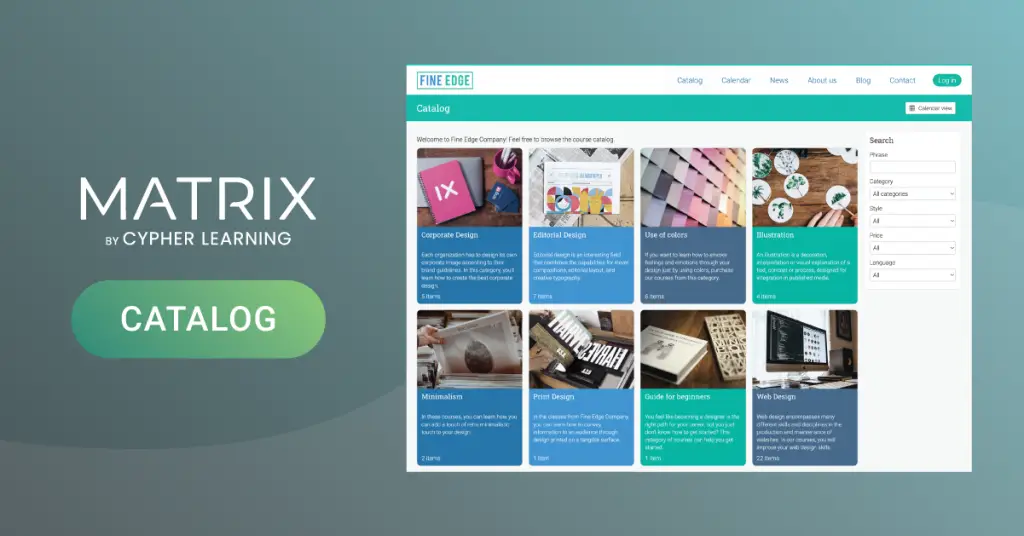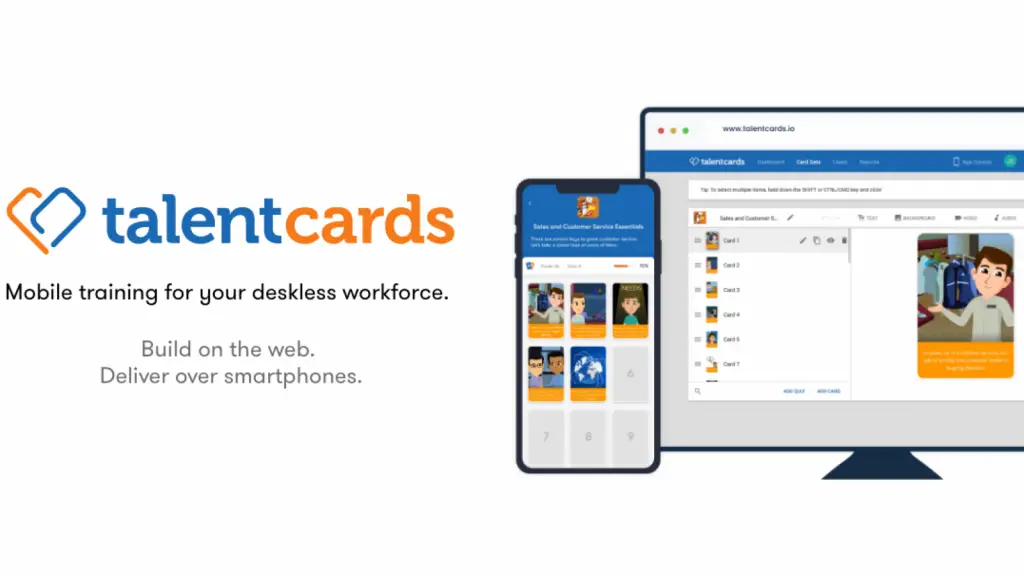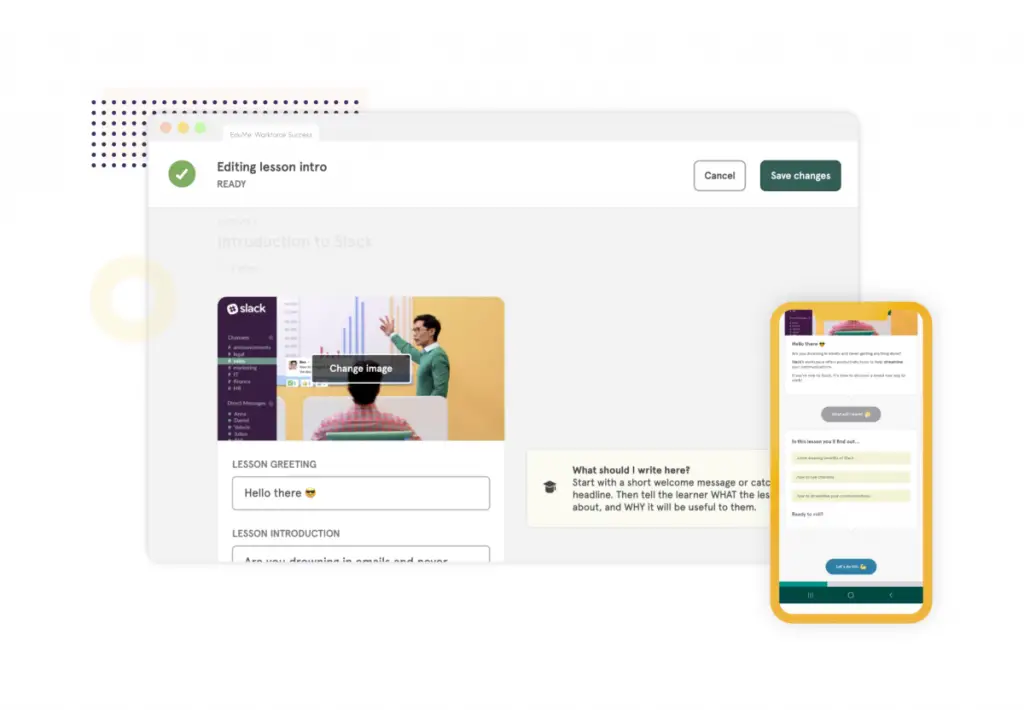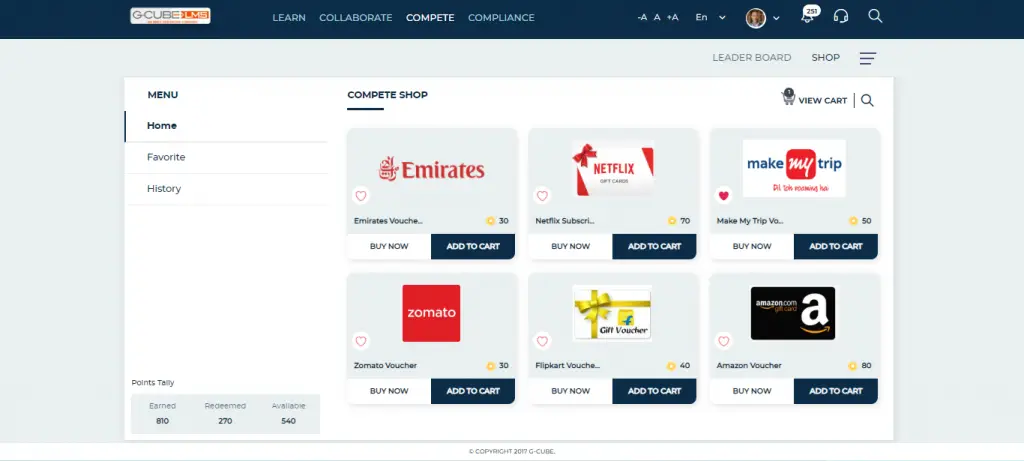Have you felt overwhelmed with so many LMS options? Simplify your search with our curated list of the Best Learning Management Systems for Universities.
Universities globally face the challenge of providing flexible, engaging, and effective education for their students. With an increasingly digital world, traditional classroom methods often fall short in meeting modern academic needs.
Learning Management Systems (LMS) present a strategic solution, transforming education and making it more accessible, personalized, and efficient.
Table of Contents
Overview
Learning Management Systems serve as the backbone of digital education, bridging the gap between educators and learners. These platforms provide a centralized space for content delivery, student assessment, and communication.
They enhance academic experiences, making education more adaptable to individual needs. Let’s delve into the unique attributes of the best LMS platforms for universities.
Best Learning Management Systems for Universities
#1. Moodle: Best for open-source customization and comprehensive course offerings
Summary
- Open-source platform
- Comprehensive course capabilities
- Highly customizable
Moodle is a foundational pillar in the world of digital academia, uniquely positioned with its open-source nature.
By offering universities an unparalleled freedom to tailor their digital academic landscapes, Moodle streamlines content creation and management.
Its extensive features are designed to cater to diverse academic needs, ensuring an enriched and effective learning ecosystem.
What are the benefits of Moodle?
- Customization: Modify to fit specific university requirements.
- Community support: Benefit from a vast user base offering various plugins and solutions.
- Scalability: Capable of accommodating growing student bodies with ease.
In an era where academic adaptability is paramount, Moodle shines as a flexible choice. Its resilience and widespread community support make it indispensable for institutions seeking a customizable and expansive educational framework.
How much does it cost?
- Starts at $120 per year
Source: https://moodle.com
#2. Blackboard: Best for robust educational tools and advanced integrations
Summary
- Comprehensive educational tools
- Advanced integration options
- Established LMS leader
A leader in the realm of educational technology, Blackboard’s acclaim is well-deserved. Renowned for its expansive toolset, it seamlessly supports educators in crafting and delivering a holistic learning experience.
Its capabilities stretch beyond mere content delivery, integrating various tools to facilitate a dynamic and interconnected academic environment.
What are the benefits of Blackboard?
- Interactive tools: Engaging mechanisms that actively involve students.
- Analytics: Advanced tracking to monitor and glean insights on student progress.
- Collaboration: Spaces designed for enriching student-to-student and student-to-teacher interactions.
For universities that prioritize a tried-and-true LMS with an emphasis on integration and holistic education, Blackboard emerges as a top contender.
Its reputation as an academic enhancer speaks volumes about its utility in a university setup.
How much does it cost?
- Starts at $9500 per year
Source: https://www.blackboard.com
#3. Canvas: Best for user-friendly interface, content delivery, and integration capabilities
Summary
- User-friendly interface
- Effective content delivery
- Rich integration capabilities
Canvas, crafted meticulously by Instructure, has made significant strides in the academic sphere due to its intuitive platform.
While it simplifies the educator’s role with its streamlined tools, students benefit from a seamless learning journey, making the entire educational process fluid and efficient.
What are the benefits of Canvas?
- Streamlined communication: Direct channels for educators and students.
- Comprehensive assessment tools: Detailed tracking of student achievements.
- Rich content formats: Supports videos, quizzes, and discussions.
Canvas offers a blend of simplicity and efficiency, making it an optimal choice for universities keen on a smooth transition to digital education while maintaining educational excellence.
How much does it cost?
- $299 per user per year
Source: https://www.instructure.com
#4. TalentLMS: Best for a streamlined academic curriculum and efficient student management
Summary
- Streamlined academic tools
- Efficient student management
- Versatile curriculum features
TalentLMS takes the spotlight when it comes to orchestrating a well-organized academic environment.
With tools crafted for precision, it provides educators the flexibility they desire without compromising on the depth of content or student engagement. This harmonizes the intricate dance of teaching and learning.
What are the benefits of TalentLMS?
- Customizable learning paths: Tailor online courses to student needs.
- Centralized content: Efficiently manage and distribute resources.
- Gamification: Engage students with game-based learning.
For institutions valuing organization and structure, TalentLMS proves its worth. It’s a solution where academic rigor meets modern technological finesse, serving both educators and students.
How much does it cost?
- Starts at $0 to $459
Source: https://www.talentlms.com
#5. SAP Litmos: Best for course diversity and faculty development
Summary
- Diverse course offerings
- Dedicated faculty development tools
- Extensive content formats
SAP Litmos, with its focus on course diversity, breaks the mold by not just serving students, but also placing emphasis on faculty development.
This dual approach ensures that while students have access to a plethora of courses, educators aren’t left behind in the digital transition.
What are the benefits of SAP Litmos?
- Mobile optimization: Learn on-the-go with mobile-friendly courses.
- Blended learning: Combine online learning and face-to-face instruction.
- Detailed reporting: Monitor and analyze academic performance.
By recognizing the symbiotic relationship between educators and students, SAP Litmos sets a new standard. Universities aiming for a comprehensive LMS that nurtures both teaching and learning will find it a fitting ally.
How much does it cost?
- Starts at $6 per user per month
Source: https://www.litmos.com
#6. Docebo: Best for AI-driven curricular paths and academic content curation
Summary
- AI-driven curriculum paths
- Efficient academic content curation
- Robust platform customization
Rooted in innovation, Docebo introduces an AI-driven approach to academia, steering away from one-size-fits-all education. This dynamic platform adapts content based on individual student needs, ensuring personalized learning experiences and propelling academic outcomes to new heights.
What are the benefits of Docebo?
- AI recommendations: Personalize course suggestions for students.
- Social learning: Encourage peer engagement and collaborative studies.
- Intuitive interface: Simplify academic processes for educators.
As universities aspire to break traditional boundaries, Docebo provides the technological prowess to make personalized education a tangible reality. Its commitment to individualized learning offers institutions a path towards academic modernization.
How much does it cost?
- Starts at $10,800 per year
Source: https://www.docebo.com
#7. Adobe Learning Manager: Best for multimedia academic content and detailed analytics
Summary
- Multimedia-rich content delivery
- Comprehensive analytics dashboard
- Efficient content organization
A name synonymous with digital creativity, Adobe’s foray into the educational arena brings Adobe Learning Manager to the forefront. A haven for multimedia content, the platform empowers educators to craft engaging and visually rich lessons, captivating the 21st-century student.
What are the benefits of Adobe Learning Manager?
- Multimedia support: Elevate lessons with videos, animations, and graphics.
- Detailed tracking: Gain insights into student performance and engagement.
- Collaborative tools: Enable interactive classroom sessions and group projects.
Adobe Learning Manager’s strength lies in its ability to merge aesthetics with functionality. Universities keen on harnessing the power of multimedia in education will find it an invaluable resource.
How much does it cost?
- $4 per user per month
Source: https://business.adobe.com
#8. Google Classroom: Best for seamless integration with Google tools and online class management
Summary
- Integrates seamlessly with Google tools
- Efficient online class management
- Streamlined content sharing
Stemming from the tech giant Google, Google Classroom offers an ecosystem that smoothly integrates with various Google tools.
It provides a centralized space, allowing educators and students to collaborate, share content, and communicate, all under a familiar umbrella of Google’s user-friendly interface.
What are the benefits of Google Classroom?
- Direct Google Drive integration: Store and share academic materials effortlessly.
- Real-time feedback: Facilitate continuous student assessment.
- Assignments and grading: Streamline the evaluation process with integrated tools.
Google Classroom stands as a testament to simplicity combined with functionality. For universities already embedded in the Google ecosystem, this platform promises a seamless digital academic experience.
How much does it cost?
- Free
Source: https://edu.google.com
#9. Teachable: Best for educators creating specialized courses or academic workshops
Summary
- Platform for specialized courses
- Efficient academic workshop tools
- Intuitive course builder
Positioned uniquely for educators with specialized knowledge, Teachable empowers them to share their expertise on a global scale. The platform facilitates the creation of standalone courses or comprehensive academic workshops, ensuring knowledge transfer is both efficient and impactful.
What are the benefits of Teachable?
- Comprehensive monetization tools: Facilitate course sales and revenue generation.
- Multimedia integration: Incorporate videos, quizzes, and PDFs into courses.
- Custom domain: Offer courses under a personalized brand name.
Teachable stands out for educators and institutions aiming to expand their reach beyond traditional boundaries. By providing the means to craft and monetize courses, it caters to the evolving demands of modern academia.
How much does it cost?
- $59 per month
Source: https://teachable.com
#10. Thinkific: Best for personalized course creation and academic marketing
Summary
- Tools for personalized course creation
- Capabilities for academic marketing
- Flexible course pricing options
Bridging the realms of education and marketing, Thinkific provides an all-encompassing platform for academic content creators. It not only offers robust course creation tools but also paves the way for strategic marketing, ensuring courses reach their desired audience.
What are the benefits of Thinkific?
- Drag-and-drop builder: Simplify course creation with intuitive tools.
- Integrated payments: Offer multiple payment gateways for course enrolment.
- Student engagement tools: Quizzes, surveys, and discussion forums to enhance learning.
Thinkific emerges as a comprehensive solution for educators looking to strike a balance between content creation and marketing. Its dual capabilities promise a holistic approach to the digital academic landscape.
How much does it cost?
- Starts from $0 to $374
Source: https://www.thinkific.com
#11. LearnDash: Best for institutions using WordPress and looking for flexibility in curriculum
Summary
- Optimized for WordPress
- Flexible curriculum development
- Advanced quizzing options
Exclusively tailored for institutions leveraging WordPress, LearnDash infuses flexibility into curriculum development. Its seamless integration with WordPress means that universities can effortlessly convert their websites into a learning hub, redefining academic accessibility.
What are the benefits of LearnDash?
- Drip-feed content: Schedule content releases for paced learning.
- Certification and badges: Recognize student achievements digitally.
- Dynamic forums: Create course-specific discussion areas for collaborative learning.
For universities invested in the WordPress ecosystem, LearnDash offers unmatched synergy. It transforms academic delivery, ensuring content is both engaging and easily accessible.
How much does it cost?
- $299 per year
Source: https://www.learndash.com
#12. Kajabi: Best for academic digital marketing and course sales
Summary
- Focus on academic digital marketing
- Comprehensive tools for course sales
- Engaging community features
Kajabi positions itself at the confluence of academia and commerce. It’s not just a platform to create and host courses, but also a robust toolkit for marketing them.
Universities and educators looking to capitalize on their expertise and reach a global audience will find Kajabi’s offerings particularly alluring.
What are the benefits of Kajabi?
- Integrated email campaigns: Reach potential students directly.
- Analytics dashboard: Gain insights into course popularity and student engagement.
- Membership sites: Create academic communities for enhanced student interaction.
As the digital academic landscape becomes increasingly competitive, Kajabi stands out. Its dual emphasis on course creation and marketing makes it a potent tool for institutions with global ambitions.
How much does it cost?
- Starts at $159 per month to $399 per month
Source: https://kajabi.com
#13. Udemy for Business: Best for offering a vast range of supplementary courses to complement formal education
Summary
- Extensive catalog of supplementary courses
- Tailored for professional development
- Dynamic content updates
An offshoot of the popular Udemy platform, Udemy for Business is tailored to offer courses that complement formal education. Universities can tap into its vast repository to supplement their curriculum, ensuring students are equipped with both academic and real-world skills.
What are the benefits of Udemy for Business?
- Expert instructors: Courses crafted by professionals in various fields.
- On-demand access: Students can learn at their pace.
- Interactive quizzes: Reinforce learning with practical assessments.
In a world where academia and professional demands often overlap, Udemy for Business fills the gap. Universities can leverage it to provide students with a holistic education, balancing theory with practical insights.
How much does it cost?
- $360 per user per year
Source: https://business.udemy.com
#14. Edmodo: Best for online classroom management and enhanced student engagement
Summary
- Streamlined online classroom management
- Tools for student engagement
- Secure communication channels
Edmodo simplifies the complexities of online education, offering a platform where educators and students can connect, collaborate, and communicate with ease.
With its secure environment and diverse toolkit, it replicates the classroom experience in a digital realm, ensuring continuity in learning.
What are the benefits of Edmondo?
- Assignment submissions: Seamless tracking and grading system.
- Real-time feedback: Instant communication tools to guide students.
- Resource library: Centralized storage for academic materials.
Edmodo’s strength lies in its ability to bridge the digital divide, ensuring that the transition from physical to online classrooms is smooth. For universities prioritizing an uninterrupted learning experience, it offers a promising solution.
How much does it cost?
- Starts at $0 to $28 per month
Source: https://edmodo.online
#15. Brightspace by D2L: Best for data-driven curriculum design and adaptive learning experiences
Summary
- Data-driven curriculum design
- Tailored adaptive learning experiences
- Comprehensive student success indicators
Brightspace by D2L champions a data-centric approach to education. With its sophisticated analytics, universities can tailor curricula to individual student needs, ensuring each learner gets an optimal, personalized educational experience and enhancing overall student outcomes.
What are the benefits of Brightspace?
- Predictive analytics: Identify students at risk and intervene proactively.
- Mobile-friendly: Learning on the go for today’s digital-native students.
- Integrations: Seamlessly connect with third-party apps and resources.
Brightspace’s commitment to data-driven decision-making allows universities to stay agile, adapting to student needs in real-time. For institutions striving for excellence, it offers a pathway to academic refinement.
How much does it cost?
- Free Trial Available
- Premium starts at $29 per month
Source: https://www.d2l.com
#16. Tovuti: Best for interactive lectures and online seminar tools
Summary
- Features for interactive lectures
- Comprehensive online seminar tools
- Engaging knowledge checks
Tovuti is more than just a platform; it’s a hub for interactive learning. Catering to the modern student’s needs, it offers tools that make lectures and seminars lively, encouraging active participation and fostering deeper comprehension.
What are the benefits of Tovuti?
- Gamification: Enhance student motivation and engagement.
- Social learning: Promote peer interaction and collaborative studies.
- Custom branding: Provide a unique learning environment tailored to the institution.
In an era where student engagement can determine academic success, Tovuti stands out as an ally for universities. It promises an interactive academic journey, ensuring content is not just consumed but truly understood.
How much does it cost?
- $775 per month
Source: https://www.tovutilms.com
#17. LearnUpon: Best for multi-departmental courses and expansive academic programs
Summary
- Ideal for multi-departmental courses
- Expansive academic program capabilities
- Efficient student progress tracking
LearnUpon stands tall as a solution for institutions with diverse faculties and expansive academic programs. Its robust platform ensures that varied departments can create, manage, and track courses with ease, ensuring a unified educational experience for all students.
What are the benefits of LearnUpon?
- Scalable solution: Efficiently manage small to large student cohorts.
- E-commerce capabilities: Monetize courses and programs seamlessly.
- Third-party integrations: Augment platform functionality with external tools.
With its ability to cater to multi-departmental needs, LearnUpon is a beacon for larger universities. Its adaptability ensures that as institutions grow, their LMS can keep pace, providing a consistently stellar academic experience.
How much does it cost?
- Basic: $599 per month
- Essential: $999 per month
- Premium: $1699 per month
Source: https://www.learnupon.com
#18. Bridge: Best for faculty development and academic performance tracking
Summary
- Focused on faculty development
- Advanced academic performance tracking
- Robust administrative tools
With a keen emphasis on the holistic development of academia, Bridge aims to uplift not just students, but also faculty.
By offering robust tools for professional development and advanced tracking, universities can ensure an elevated teaching standard, benefitting the entire educational ecosystem.
What are the benefits of Bridge?
- Continuous learning: Opportunities for faculty to expand their skills.
- Retention insights: Track student progress and predict potential dropouts.
- Customizable learning paths: Personalize the academic journey for diverse student needs.
As universities recognize the importance of empowering their faculty, Bridge emerges as a pivotal tool. Its comprehensive offerings promise a boost in teaching quality, translating to enriched student outcomes.
How much does it cost?
- $12,500 per year
Source: https://www.getbridge.com
#19. 360Learning: Best for collaborative academic content design
Summary
- Promotes collaborative academic content design
- Enables real-time feedback loops
- Empowers decentralized course creation
360Learning revolutionizes content creation by embracing a collaborative approach. By empowering all stakeholders—be it professors, students, or administrative staff—to contribute, it fosters a rich, dynamic educational environment that’s reflective of diverse inputs.
What are the benefits of 360Learning?
- Engagement analytics: Understand content impact and areas of improvement.
- Plug-and-play integrations: Seamlessly merge with existing tech stacks.
- External community collaboration: Engage experts outside the university.
Universities seeking a departure from traditional, top-down content creation will find 360Learning refreshing. It capitalizes on collective intelligence, ensuring academic content is both inclusive and impactful.
How much does it cost?
- $8 per user per month
Source: https://360learning.com
#20. Absorb LMS: Best for mobile academic experiences and student-centric design
Summary
- Tailored for mobile academic experiences
- Prioritizes student-centric design
- Intuitive learner interface
Absorb LMS recognizes the ubiquity of mobile devices in today’s academic landscape. By sculpting a platform optimized for mobile learning, it ensures students have access to education anytime, anywhere, making learning truly boundary-less.
What are the benefits of Absorb LMS?
- AI-driven personalization: Tailor learning paths based on student behavior.
- Robust reporting: Gain granular insights into academic performance.
- Social learning tools: Foster peer interaction and collaborative learning.
In an age where learning isn’t confined to classrooms or desktops, Absorb LMS emerges as a forerunner. It guarantees that the pursuit of knowledge remains uninterrupted, irrespective of where students choose to study.
How much does it cost?
- $800 per month
Source: https://www.absorblms.com
#21. Schoology: Best for comprehensive curriculum management and enhanced collaboration
Summary
- Comprehensive curriculum management tools
- Facilitates enhanced collaboration
- Seamless integrations with educational tools
Schoology stands as an end-to-end solution, providing both educators and students with a comprehensive suite of tools. It encapsulates every facet of the educational process, from curriculum design to student interaction, making it a preferred choice for many universities.
What are the benefits of Schoology?
- Advanced analytics: Gain insights into student performance and curriculum effectiveness.
- Personalized learning environments: Cater to diverse student needs and preferences.
- Dynamic media embedding: Enrich content with multimedia elements for better engagement.
Schoology embodies the spirit of holistic education. With its exhaustive feature set, universities can ensure every aspect of the academic process is streamlined, leading to enriched learning experiences.
How much does it cost?
- $10 per student
Source: https://www.powerschool.com
#22. Skillshare for Teams: Best for specialized workshops and departmental collaboration
Summary
- Tailored for specialized workshops
- Promotes departmental collaboration
- Expansive creative course library
Skillshare for Teams takes the vast creative prowess of Skillshare and molds it for academic settings. Universities seeking to augment traditional curriculum with specialized workshops, especially in creative domains, will find this platform incredibly beneficial.
What are the benefits of Skills for Teams?
- Expert-led classes: Gain insights from professionals in the creative industry.
- Project-based learning: Encourage students to apply their knowledge practically.
- Peer feedback system: Foster a community of collaborative learning.
As the lines between academic and creative learning blur, Skillshare for Teams emerges as a bridge. It provides an avenue for students to explore and hone creative skills, complementing their formal education.
How much does it cost?
- $99 per month
Source: https://teams.skillshare.com
#23. iSpring Learn: Best for rapid academic content development
Summary
- Enables rapid academic content development
- Intuitive user interface
- Mobile-optimized learning paths
iSpring Learn is designed for universities that prioritize efficiency without compromising quality. Its toolkit allows for the rapid creation of academic content, ensuring educators can quickly respond to changing curricula or emergent student needs.
What are the benefits of iSpring Learn?
- Integrated authoring tools: Craft courses with ease, without third-party software.
- Detailed reporting: Track student progress and course effectiveness.
- Gamification features: Enhance student engagement with game-like elements.
For institutions operating in dynamic environments, iSpring Learn offers a nimble solution. Its emphasis on quick content creation ensures academic delivery remains timely and relevant.
How much does it cost?
- $770 per year
Source: https://www.ispringsolutions.com
#24. WizIQ: Best for creating immersive online classroom environments
Summary
- Designed for immersive online classroom environments
- Comprehensive tools for live and asynchronous learning
- Mobile learning enabled
WizIQ has long been an ally for educators seeking to replicate the physical classroom experience online. Its suite of tools, from virtual classrooms to whiteboards, ensures that the essence of face-to-face teaching is not lost, even in a digital format.
What are the benefits of WizIQ?
- Real-time engagement: Foster lively class discussions and debates.
- Scalability: Conduct classes for small groups or large cohorts with ease.
- Secure content management: Ensure academic materials remain protected.
As universities increasingly embrace hybrid learning models, WizIQ stands out as a bridge between traditional and online teaching, promising a seamless transition and a rich academic experience.
How much does it cost?
- Free version available
- $3901 per year
Source: https://www.wiziq.com
#25. Cornerstone OnDemand: Best for academic talent management and corporate training
Summary
- Tailored for academic talent management
- Offers comprehensive faculty training
- Emphasis on continuous learning
Cornerstone OnDemand is more than just a student-centric platform; it’s a tool that elevates the entire educational ecosystem. By investing in faculty training and talent management, it ensures that educational standards remain consistently high and evolve with the times.
What are the benefits of Cornerstone OnDemand?
- Skill development: Equip faculty with the latest teaching methodologies.
- Analytics: Understand teaching effectiveness and areas of improvement.
- Collaboration tools: Foster inter-departmental exchanges and growth.
The strength of an academic institution often rests on its educators. Cornerstone OnDemand recognizes this, offering universities a pathway to nurture their most valuable asset: their faculty.
How much does it cost?
- Starts from $6 per month
Source: https://www.cornerstoneondemand.com
#26. Totara Learn: Best for diverse course offerings and academic flexibility
Summary
- Offers diverse course offerings
- Provides significant academic flexibility
- Open-source for customization
Totara Learn is an adaptable platform, ready to cater to the ever-evolving needs of a dynamic academic institution. Its open-source nature means it can be tailored to unique university requirements, ensuring a perfect fit every time.
What are the benefits of Totara Learn?
- Personalized learning plans: Align student goals with academic outcomes.
- Hierarchical structures: Mirror university departments and faculties digitally.
- Compliance training: Stay updated with educational standards and regulations.
Flexibility in education is paramount, and Totara Learn embodies this principle. For universities that champion adaptability and growth, it offers a platform that evolves in tandem with institutional aspirations.
How much does it cost?
- $8,500 per year
Source: https://www.totara.com
#27. Ruzuku: Best for fostering academic communities and peer-to-peer engagement
Summary
- Emphasizes fostering academic communities
- Enables peer-to-peer engagement
- Intuitive course creation tools
Ruzuku is not just about content delivery; it’s about cultivating a community of learners. The platform places strong emphasis on interaction, ensuring that students and educators can engage in meaningful dialogues, enriching the overall learning experience.
What are the benefits of Ruzuku?
- Integrated payment gateways: Facilitate easy course monetization for special programs.
- Multimedia support: Enhance lessons with varied content types.
- Daily backups: Ensure academic content and discussions are always secure.
For universities that see value in a close-knit academic community, Ruzuku offers an ideal environment. The platform nurtures the spirit of collective learning, ensuring students gain both knowledge and connections.
How much does it cost?
- $99 per month
Source: https://www.ruzuku.com
#28. SkyPrep: Best for quick course deployment and flexible learning paths
Summary
- Focuses on quick course deployment
- Offers flexible learning paths
- User-friendly interface for educators and students
In the rapidly evolving world of academia, speed is of the essence. SkyPrep recognizes this, providing educators with tools to swiftly deploy courses. This agility ensures that institutions can react to changing educational landscapes with pace and precision.
What are the benefits of SkyPrep?
- Automated grading: Streamline assessment processes.
- Custom branding: Align the platform’s look with the university’s branding.
- SCORM and xAPI compatibility: Ensure content standardization and interoperability.
SkyPrep is a boon for institutions that value agility. With its streamlined course deployment tools, universities can stay one step ahead, offering students timely and relevant content.
How much does it cost?
- $199 per month
Source: https://skyprep.com
#29. Looop: Best for academic research sharing and peer support
Summary
- Geared towards academic research sharing
- Facilitates peer support
- Engaging content delivery methods
Looop goes beyond traditional course delivery, paving the way for an ecosystem where academic research and peer support are central. Universities aiming to foster a culture of collaboration and shared discovery will find Looop’s offerings immensely valuable.
What are the benefits of Looop?
- Dynamic content types: Engage students with varied lesson formats.
- Mobile accessibility: Ensure research and courses are accessible on-the-go.
- Feedback loops: Continuously refine academic content based on student input.
Looop represents the evolution of academia – where learning is not just top-down but a shared journey. For universities that champion collective discovery, it’s an ideal companion.
How much does it cost?
- Starts at $299 pet month to $1199 per month
Source: https://www.looop.co
#30. LMS365: Best for seamless integration with Microsoft tools
Summary
- Seamless integration with Microsoft tools
- Optimized for academic collaboration
- Built on the familiar Office 365 environment
LMS365 thrives in an environment where Microsoft’s suite of tools reigns supreme. Universities already invested in the Office 365 ecosystem will find LMS365’s native integration invaluable, turning familiar platforms into robust educational tools.
What are the benefits of LMS365?
- Streamlined operations: Leverage existing Office 365 tools for academic tasks.
- Mobile learning: Facilitate courses on-the-go using the Office mobile suite.
- Compliance features: Ensure academic standards are met with regular updates.
For an institution deeply intertwined with Microsoft’s tools, LMS365 presents a seamless extension. It transforms the familiar into the formidable, ensuring academic processes run smoothly on trusted platforms.
How much does it cost?
- $24 per year per user
Source: https://lms365.com
#31. MATRIX LMS: Best for blended academic approaches and diverse learning paths
Summary
- Advocates blended academic approaches
- Supports diverse learning paths
- Rich features for both synchronous and asynchronous learning
MATRIX LMS addresses the modern academic challenge of catering to diverse learning styles and paces. With tools to support both in-person and digital learning, it offers universities a versatile platform to serve a heterogeneous student base.
What are the benefits of MATRIX LMS?
- Gamification: Enhance student motivation and participation.
- Customizable portals: Reflect the university’s brand and ethos.
- Advanced reporting: Dive deep into analytics for informed academic decisions.
In the age of personalized education, MATRIX LMS emerges as a frontrunner. Universities seeking to offer bespoke learning experiences will find its toolkit both comprehensive and intuitive.
How much does it cost?
- $549-$2199 per month
Source: https://www.matrix.edu.au
#32. TalentCards: Best for bite-sized learning modules and revision
Summary
- Specializes in bite-sized learning modules
- Optimized for quick revision sessions
- Mobile-centric approach to learning
In a world of shrinking attention spans, TalentCards offers a refreshing approach to academia. By breaking down information into digestible chunks, it ensures that students can quickly grasp concepts, making it a prime tool for revision or supplementary learning.
What are the benefits of TalentCards?
- User-friendly design: Simplify the learning process for students.
- Offline access: Ensure learning continuity, even without internet access.
- Analytics: Track student progress and identify areas of improvement.
TalentCards is the embodiment of modern microlearning. For universities keen on providing concise, impactful lessons, especially for revision purposes, it offers a proven strategy.
How much does it cost?
- $0-$75 per month
Source: https://www.talentcards.com
#33. EduBrite: Best for expansive course catalogs and academic workshops
Summary
- Offers expansive course catalogs
- Designed for both academic workshops and formal courses
- Provides microlearning opportunities
EduBrite emerges as a platform of choice for universities with expansive academic portfolios. Catering to both rigorous formal courses and dynamic workshops, it provides a flexible environment that adapts to the varied learning needs of students.
What are the benefits of EduBrite?
- Mobile learning: Facilitate academic pursuits on the move.
- Personalized learning paths: Address individual student’s needs and aspirations.
- Quiz and survey tools: Gather feedback and assess understanding effectively.
EduBrite shines in scenarios where diversity in academic offerings is paramount. Its adaptive features ensure universities can serve a broad spectrum of student needs without compromising on quality.
How much does it cost?
- $399 per month
Source: https://www.edubrite.com
#34. EduMe: Best for mobile-based academic modules
Summary
- Optimized for mobile-based academic modules
- User-friendly interface for educators and students
- Supports just-in-time learning
EduMe brings academia into the pocket. Recognizing the ubiquitous nature of smartphones among students, it offers a platform that’s tailored for on-the-go learning, making it easier for students to engage with their coursework anytime, anywhere.
What are the benefits of EduMe?
- Multimedia support: Enrich lessons with diverse content formats.
- Reporting and analytics: Gauge student progress in real-time.
- Integration capabilities: Link with other tools for a cohesive learning ecosystem.
In the mobile era, EduMe provides a timely solution for universities. As the boundaries between formal and informal learning blur, it offers a bridge, ensuring academic excellence is always within reach.
How much does it cost?
- $149 per month
Source: https://www.edume.com
#35. G-Cube LMS: Best for interactive and gamified academic modules
Summary
- Specializes in interactive and gamified academic modules
- Ensures engaging and immersive learning experiences
- Prioritizes student engagement and motivation
G-Cube LMS transforms the conventional classroom into a realm of exploration. By leveraging gamification, it ensures that the academic journey is not just informative but also engaging, striking a balance between serious learning and playful exploration.
What are the benefits of G–Cube LMS?
- Adaptive learning: Tailor course materials based on individual student progress.
- Social learning tools: Foster collaboration and peer-to-peer interactions.
- Assessment engines: Implement diverse testing methods for comprehensive evaluations.
Universities aiming to break the monotony of traditional learning will find G-Cube LMS a worthy ally. It redefines academia, turning it into a thrilling quest for knowledge.
How much does it cost?
- $25-$50 per user per year
Source: https://www.gc-solutions.net
Conclusion
In today’s digital age, the best Learning Management System can redefine the academic experience, offering unparalleled flexibility, engagement, and adaptability.
From customizable course designs to immersive gamified modules, there’s a learning management software tailored for every university’s unique needs.
Dive into the world of digital academia with confidence by selecting the perfect LMS for your institution. Ready to transform your academic journey? Choose the best LMS and elevate your educational offerings today.


